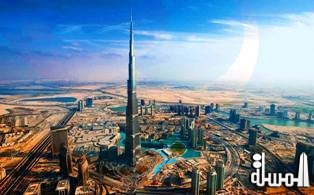
TOURISM TIDBITS :
Tourism, Transportation, and Security
Part 2 of a Two Part Series
.jpg) By Dr . Peter Tarlow
By Dr . Peter Tarlow
As noted in the June edition of Tourism Tidbits there is a symbiotic relationship between tourism and transportation. Tourism, as we know it, cannot survive without a good and safe transportation system. Although the inverse is not absolutely true, much of the transportation industry depends on tourism. Although, some forms of transportation would appear to be independent of tourism, for example the trucking industry, tourism is such a major economic factor that without it even the trucking industry would have fewer goods to deliver and thus suffer. Thus, although there is not a perfect symbiotic relationship between the two, tourism and transportation industries are closely connected and to a great extent mutually dependent.
Because most of tourism is based on non-essential spending (business travel has been the one major exception to this rule and with the continual development of the internet and simultaneous “tele-castings”, this too may change) tourism is highly dependent on safe and secure, efficient and affordable transportation.
In this moth’s edition and the second part of this series Tourism Tidbits explores some of the challenges facing these combined industries and also turns to some of the transportation methods not mentioned in Part I (see last month’s Tourism Tidbits) of this two part series. Once again, the material found below is meant only to create dialogue and should not be considered in any way a formal recommendation.
-Tourism transportation centers and methods need a great deal of upgrading in many parts of the world. Too many sea and airport terminals are outmoded. Bus and rail terminals are known in many places around the world as, at best, dirty and expensive and often are seen as dangerous or as unintended homeless shelters.
Rest rooms tend to be dirty, and food services when available overcharge and under-deliver. Rarely do terminals reflect the culture of the locale, although some airports, such as the airports in Puerto Vallarta, Mexico, Tel Aviv, Israel, and Vancouver, British Columbia, Canada provide some local flavor upon deplaning. For the most part, transportation terminals are boring, are inefficient in handling passengers, dirty and not pleasant.
-Signage and roadways need major over-halls. Some areas of the world have done an excellent job in upgrading highways and services provided along these highways. Other parts of the world, make land travel a dangerous and unpleasant adventure. Too great a distance often separates traveler services from each other, signage is often either non-existent or poor, and for those who do not speak the local language, an exercise in stress management. Furthermore, in too many locations highway landscaping seems to be of a cookie cutter variety, that is one road looks like another.
Visas and visa wavers. Perhaps no topic is more highly contested than the use of visas. Visas exist for three reasons, (a) as a tax on visitors entering a specific nation, (2) to protect the nation from unwanted visitors (3) to make a political statement. Prior to the growth of international terrorism the use of visas was on the wane with nation after nation adopting visa waver programs. Each new terrorist attack means that this trend may continue to be reversed. The results will be that travelers going from one nation to another may need to jump through additional hoops before they can set foot on an airplane or ship.
-Issue concerning land transportation. There are four major forms of land transportation that most tourists/visitors use. These are car, motor coach, buses,) and train transportation. Each has it own issues and challenges.
-Cars and rental cars. Cars (privately owned or rented) tend to be used by people who are independent travelers. Their great advantages are flexibility and changeability. It may be for this reason that car travel is tourism’s number one mode of transportation with estimates as high as 77% of the travel market. Currently gas prices are low and these low prices means that travelers have the cost factor as an advantage, Rental cars also benefit from low gas prices, but many rental car locations are located in airports that add numerous additional fees. These add-ion fees are not only infuriating to many visitors, but can drive the cost of the rental car up considerably.
Another issue is that drivers must not only deal with toll roads but that many of these toll roads are not manned and the driver, being a tourist may not have the proper toll sticker. Once again, tourism suffers as the replacement of customer service with machines means that there are less people to ask and the experience is much more homogenized. It should be noted that the independent car traveler pays the same gas taxes and tolls as does the local driver.
-Bus and Motor Coaches. Although most motor coaches are technically “buses” there is a great difference between them. Buses tend to be either used in local destinations or between destinations. In some parts of the world, buses come well equipped with wi-fi, toilets and often serve refreshments. In other parts of the world they are a travelers challenge.
Buses, as opposed to motor coaches, tend to provide basic transportation. Motor coaches may have an affinity group, tend to be part of a specific tour and develop their routs to meet the needs of their clients. Buses are dependent on terminals. Motor coaches usually pick visitors up at a pre-set location such as a hotel and take them to pre-set destinations. Both industries are benefiting currently from low gas prices but are heavily taxed. A major issue revolving around motor coaches is their arrival brings some 3-40 passengers to a location for specific times and these vehicles need convenient places to park especially as older travelers often have a tendency to gravitate to this form of transportation.
-Rail transportation. Railroads in many countries are primarily freight movers, but in other lands such as Japan and Europe rail traffic is a popular form of tourist travel. Trains have several advantages over airplanes. Among these advantages are: they provide more space for luggage, they usually go to the center of a city and until recently they have been perceived to be safer than planes.
European nations especially have invested great sums of money in high-speed rail lines. Travel by rail is often faster than by plane when one considers the total trip, home portal to final destination and allow for passengers to see the scenery. In other parts of the world, train stations are often substandard and customer service is an almost unknown concept.
This past month has been especially filled with tragedies due to the scourge of terrorism.
Tourism & More expresses its deep condolences to all those who have died or have been injured because of these senseless acts of terrorism.
May the souls of the dead rest in peace, may the injured rebuild their lives, and may the hatred come to an end.
Dr . Peter Tarlow President and Founder Of Tourism& More Inc
the President of T&M, a founder of the Texas chapter of TTRA and a popular author and speaker on tourism. Tarlow is a specialist in the areas of sociology of tourism, economic development, tourism safety and security.








